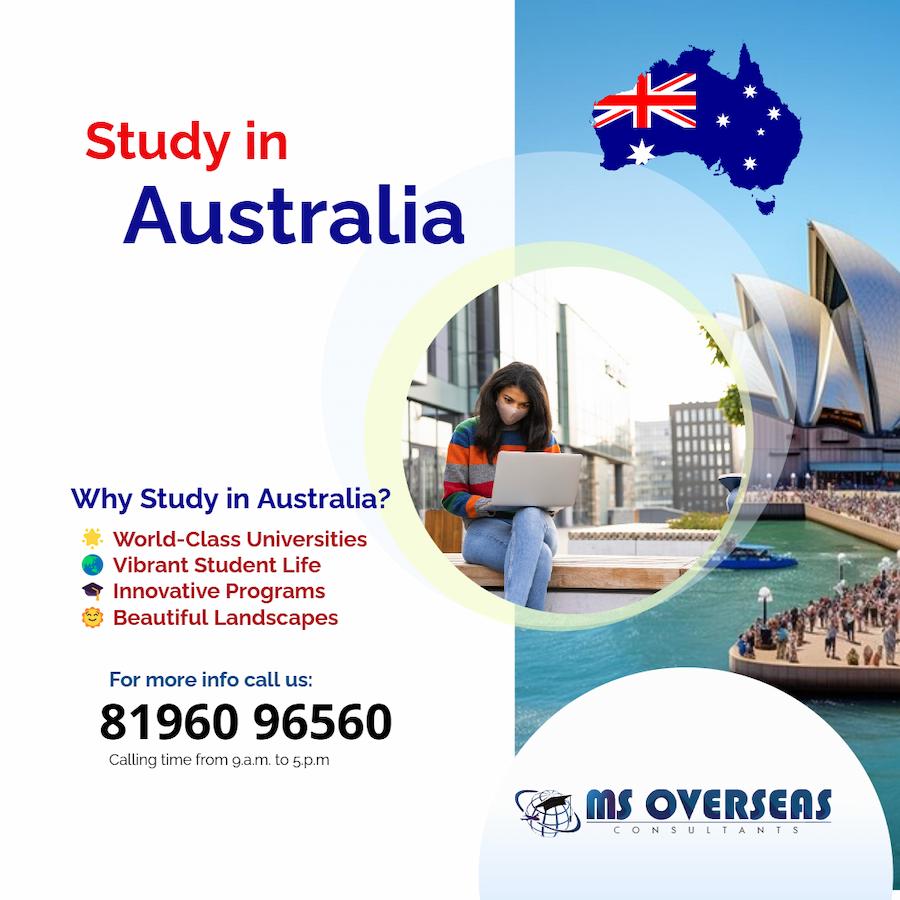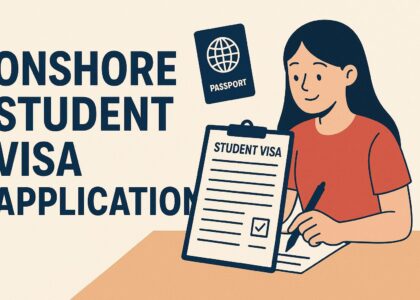Effective July 1, 2024, Australia has implemented a significant increase in international student visa fees, raising the cost from $710 to $1,600 per application. This adjustment is part of broader reforms set forth by the Australian Government at the start of the new financial year. Australia Increases International Student Visa Fees
Reasons Behind the Visa Fee Increase
The decision to substantially hike visa fees stems from Australia’s commitment to enhancing the value of its education sector and supporting critical reforms across education and migration systems. Minister for Education, Jason Clare, underscored the importance of these changes, stating, “International education is a vital national asset, and these adjustments are crucial to maintaining its integrity and quality.” Australia Increases International Student Visa Fees

Initiatives Funded by Increased Visa Fees
The additional revenue generated by the fee increase will be allocated to several key initiatives aimed at bolstering Australia’s education sector and supporting skilled migration:
Education Sector Enhancements:
- Introduction of fairer HECS terms and expansion of FEE-Free Uni Ready courses to promote accessibility and affordability.
- Implementation of paid practical experiences to enrich learning outcomes. Australia Increases International Student Visa Fees
Vocational Education and Training (VET) Support:
- Financial assistance for apprentices and their employers to foster skill development and increase employment opportunities.
Migration Strategy Improvements:
Streamlining of the migration process to ensure efficiency and uphold the integrity of the international education sector.
Minister for Skills and Training, Brendan O’Connor, emphasized the significance of these reforms, stating, “Australia’s reputation for world-class education attracts students globally. It is imperative that we uphold the standards they expect and deserve.”
Other Changes in Australia’s Migration System
In addition to the fee increase, several other reforms will come into effect on July 1, 2024, aimed at enhancing the migration process and benefiting international students and skilled migrants:
- Higher Income Threshold for Skilled Migrants: The minimum income requirement will rise to $73,150, ensuring equitable compensation.
- Changes to Temporary Graduate Visas: Adjustments to visa duration and eligibility criteria to better align with labor market demands.
- Closure of ‘Visa Hopping’ Loopholes: Measures to prevent indefinite visa extensions and maintain fairness in the system.
- Extended Stay Between Jobs: Extension of the period skilled migrants can stay between jobs from 60 to 180 days, offering greater flexibility.
Minister for Home Affairs and Cyber Security, Clare O’Neil, commented, “These reforms are crucial in rectifying past shortcomings in our migration and education systems. They are designed to restore integrity and fairness.”
Implementation Details and Impact
The Australian Government has published the updated fee schedule on the Department of Home Affairs website, outlining fees for main applicants and accompanying family members. The adjustment reflects Australia’s commitment to enhancing its international education sector, despite recent challenges in visa approval rates.
Reaction and Stakeholder Response
The fee increase has sparked varied reactions within the education sector. Go8 Chief Executive, Vicki Thomson, expressed concerns, noting that the move could deter prospective international students and impact Australia’s services export sector negatively.
Historical Context and Policy Evolution
To understand the rationale behind Australia’s recent visa fee hike, it’s essential to explore the historical context and the evolution of immigration policies in the country. Australia has long been recognized for its robust education system, attracting students from all corners of the globe. However, maintaining the quality and integrity of this system has been a continuous challenge amid global economic shifts and changing migration patterns.
Economic Impact and Education Sector Dynamics
The economic impact of international students on Australia’s economy cannot be overstated. Beyond tuition fees, international students contribute significantly to local economies through spending on accommodation, food, transportation, and various other goods and services. This economic contribution underscores the importance of policies that attract and retain international students while ensuring their educational experience meets high standards.
Government Policy Objectives and Strategic Goals
Australia’s recent policy adjustments align with broader government objectives aimed at strengthening the nation’s economic resilience and global competitiveness. By enhancing visa regulations and fee structures, the government aims to strike a balance between welcoming international talent and protecting local job markets. These strategic goals reflect a proactive approach to navigating the complexities of global migration and education trends.
Challenges and Opportunities for Stakeholders
For stakeholders in the education and migration sectors, navigating regulatory changes can present both challenges and opportunities. Educational institutions must adapt their recruitment strategies and support services to attract a diverse cohort of international students. Similarly, employers must navigate evolving visa requirements to access global talent pools effectively. Understanding these challenges and leveraging opportunities can position stakeholders for success in a dynamic global landscape.

Global Comparisons and Competitive Positioning
Comparing Australia’s visa policies with those of other leading education destinations provides valuable insights into competitive positioning. Countries like Canada, the United Kingdom, and the United States also compete for international students, each offering unique advantages and challenges. By benchmarking against global standards, Australia can refine its policies to maintain a competitive edge in attracting top-tier talent from around the world.
Future Outlook and Strategic Considerations
Looking ahead, the future of Australia’s international education sector hinges on its ability to adapt to evolving global dynamics and market demands. Continued investment in education infrastructure, policy flexibility, and stakeholder collaboration will be essential to sustaining growth and resilience. As Australia navigates post-pandemic recovery and geopolitical shifts, strategic foresight and agile policymaking will play pivotal roles in shaping the sector’s trajectory.
frequently asked questions (FAQs) regarding international student visas for Australia:
What is an international student visa for Australia?
An international student visa (subclass 500) allows individuals to study full-time at a registered educational institution in Australia.
Who needs an Australian student visa?
Any international student planning to study in Australia for more than 3 months needs a student visa.
How do I apply for an Australian student visa?
You can apply online through the Department of Home Affairs website or via a registered migration agent.
What are the eligibility criteria for an Australian student visa?
Eligibility criteria include having an offer of enrollment from an Australian educational institution, sufficient funds to cover living costs, and health insurance.
How long does it take to process an Australian student visa?
Processing times vary but typically range from 4 to 12 weeks depending on individual circumstances and peak periods.
Can I work while studying on an Australian student visa?
Yes, international students on a subclass 500 visa can work up to 40 hours per fortnight during term time and full-time during scheduled breaks.
What happens if my visa application is rejected?
If your visa application is rejected, you will receive a notification with reasons for refusal. You may appeal the decision or reapply with additional documentation.
Can I extend my Australian student visa?
Yes, you can apply to extend your visa if you have further study requirements or need additional time to complete your current course.
Do I need health insurance while on an Australian student visa?
Yes, all international students must maintain Overseas Student Health Cover (OSHC) for the duration of their stay in Australia.
Can I include family members on my Australian student visa?
Yes, you can include eligible family members (spouse and children) on your student visa application.
What are the financial requirements for an Australian student visa?
You need to demonstrate sufficient funds to cover tuition fees, living expenses, and any dependents included on your visa application.
Is there an age limit for applying for an Australian student visa?
There is no specific age limit for applying, but you must meet health and character requirements.
Can I study part-time on an Australian student visa?
International students are generally required to study full-time. Part-time study may be permitted in specific circumstances with prior approval.
Can I travel in and out of Australia on a student visa?
Yes, you can travel in and out of Australia multiple times while your student visa is valid.
What support services are available for international students in Australia?
Australian educational institutions offer a range of support services including academic support, counseling, and assistance with accommodation and visa matters.
Conclusion: Australia’s decision to increase international student visa fees reflects its commitment to maintaining the integrity and quality of its education sector while implementing necessary reforms in migration policies. These changes aim to create a fairer and more efficient system that supports both international students and skilled migrants.
Contact Us: For more information and personalized assistance regarding student visas and migration to Australia, please contact us

Disclaimer
The information provided here is based on the latest updates from the Australian Government and may be subject to further changes. For the most current details and guidance, please refer to the official resources provided by the Department of Home Affairs.
Source: monitor.icef.com
- Cost of MBA in Abroad: Detailed Guide for USA, UK, Australia, Europe, China, and Asia
- Australia’s New Rules for Temporary Graduate Visa Holders
- Navigating Australia’s Updated Student Visa Regulations: A Comprehensive Guide
- Australian Student Visa Financial Requirements Updated: What You Need to Know
Also read:
- Onshore Student Visa Application: Complete Guide for International Students in 2025
- Australia’s New Student Visa Rules in 2025 – Expert Tips for Indian Students
- How to Improve English & Communication Skills in Australia
- Top Tips for International Students in Melbourne: A Complete Guide
- Your Ultimate Guide to Pursuing an MBA in Australia – Everything You Need to Know





